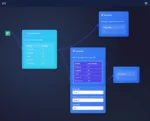
by tyler garrett | Jun 25, 2025 | Data Visual
Imagine stepping into a store and effortlessly finding everything exactly where you expect it to be—the aisles feel intuitive, products entice from the shelves, and the environment gently guides you toward purchases. This seamless customer journey isn’t just luck; it’s a precise science powered by insightful retail space analytics. Leveraging data-driven insights combined with cutting-edge Power BI consulting services, retail analytics transforms traditional store layout optimization from guesswork into an exact process. Let’s unpack how harnessing data and analytics reshapes store layouts, enhances consumer experience, and significantly improves retail profitability.
Why Retail Space Analytics Matters for Your Store Layout
In retail, every square foot counts. Your store layout shapes customer movement, affects decision-making, and directly impacts your bottom line. Emerging technologies like real-time tracking, predictive analytics, and advanced data visualization provide powerful tools to reevaluate space usage strategically. For instance, using intuitive data visualization tools, you can effectively monitor shopper behaviors, identify high-traffic areas, or detect bottlenecks causing friction in customer experience.
Analytics offers insights beyond traditional sales data. By blending transactional history, in-store navigation tracking, and consumer demographics, you gain a dimensional view of shopper preferences and habits. Consider mapping heat zones where consumers linger, versus locations commonly ignored. These visuals illustrate powerful insights, highlighting opportunities for improved product placement or space reallocation. Greater clarity comes through advanced visualizations like Voronoi treemaps for hierarchical visualization, providing immediate understanding of sales performance against square footage.
Retail analytics also empowers predictive modeling decisions, allowing store managers to forecast customer responses to layout adjustments before physically moving merchandise. By executing informed changes, retailers improve customer satisfaction, increase dwell time, and ultimately boost revenue outcomes. This compelling shift from intuitive decisions to data-driven strategies is vital in the increasingly competitive brick-and-mortar retail landscape today.
Understanding the Customer Journey Through Location Analytics
Taking full advantage of location analytics means diving deeper into customer in-store interactions and their adjacent digital footprint. By understanding how customers navigate physical spaces and how these interactions compare against transactional data, companies attain a granular view of customer intent and behaviors. In-store sensors, beacon technology, and Wi-Fi analytics offer powerful capabilities to trace exact consumer movements, dwell time, and attention hot zones precisely.
Location analytics integrated with your sales and transactional databases provides robust correlation insights. Leveraging efficient database management practices like SQL BETWEEN Operator range filtering, analysts quickly drill down to pinpoint transactions correlated with specific store areas or product displays. Combining in-store positional data with demographic segmentation further sharpens personalization possibilities, leading to more targeted in-store experiences or marketing.
Beyond pure sales and revenue improvements, deeper location analytics directly enhance customer experience. Retailers who thoroughly understand their shoppers’ paths can strategically adjust layouts—optimizing spacing, aisle widths, display positioning—to facilitate effortless and enjoyable shopping journeys. As impressive case studies highlighted in “From Gut Feelings to Predictive Models: A Client Journey” demonstrate, data-backed optimizations frequently result in enhanced customer loyalty and higher lifetime value.
Making Smart Decisions with Real-Time Store Analytics Dashboards
When it comes to capitalizing on retail space analytics insights, real-time dashboards are genuinely transformative. Real-time data provides immediate opportunities: responding rapidly to emerging trends, shifting customer flows, or promotional impacts. Retailers increasingly adopt real-time dashboarding solutions to aggregate live data streams into intuitive visual summaries. Such dashboards deliver actionable insights—not weeks later in retrospective reports—but as situations develop, allowing instant, informed decision-making on merchandise placement, staffing, and promotions.
Selecting the optimal real-time dashboard infrastructure matters significantly. Comparing visualization tools using resources such as our benchmark guide “Real-Time Dashboard Performance: WebGL vs Canvas Rendering Benchmarks” ensures your system is fast, responsive, and stable under real operational conditions. Dashboard responsiveness affects staff usability and action-taking efficiency—a critical factor when your team needs instant cues to adjust layouts during peak shopping periods.
Additionally, employing decluttering techniques for complex dashboard designs allow field managers and executives to access clear, streamlined visuals that remain meaningful amidst large datasets. With effective dashboarding practice, your store layout managers no longer rely solely on intuition. Instead, they confidently leverage instantly accessible data feedback to make say, fine-tuned adjustments or experiment with novel layout changes backed by quantifiable analytics.
Ensuring Secure and Compliant Retail Data Operations
As retailers increasingly rely on granular customer movement and transaction data, ensuring compliance and security of sensitive information becomes a critical priority. Adhering to robust regulatory frameworks such as GDPR, CCPA, and industry-specific guidelines helps retailers protect consumer privacy and mitigate risks. Our deep dive article around “Data Privacy Regulations and Their Impact on Analytics” underscores the necessity for compliant data handling practices, helping retailers balance powerful analytics with responsible privacy standards.
Retail space analytics involves substantial personal data—from purchase behaviors to navigation patterns. Implementing structured data governance and strict permission management approaches ensures only authorized individuals operate with this sensitive data. Using contemporary permission and access control practices such as attribute-based access control for fine-grained permissions helps retailers easily align analytics operations with required governance and compliance standards.
Furthermore, database-level security practices must align with your analytics infrastructure. By carefully granting SQL privileges and permissions, retailers minimize risks associated with unauthorized data access, loss, or breaches. Such careful security and compliance protocols reinforce your analytics capabilities, soothe customer privacy concerns, and fortify retailers’ reputations, setting the stage for long-term, scalable analytics solutions.
Building Sustainable Infrastructure for Retail Space Analytics
If your retail analytics strategy isn’t backed by scalable and reliable infrastructure, even powerful insights won’t achieve optimal effectiveness. Infrastructure modernization, leveraging advanced cloud solutions and embracing automated deployments, ensures your analytics capabilities remain agile, robust, and easily adaptable. Strategies and methods outlined in our guide “The Data Engineer’s Guide to Infrastructure as Code” underline automation’s power in rapidly deploying scalable analytics solutions tailored specifically for retail environments.
Infrastructure as Code (IaC) enables retailers to rapidly iterate and scale analytics practices consistently across multiple store locations. From small boutiques to global retail chains, automated infrastructure deployments facilitate quick adaptation to store-specific requirements based on real-time analytics feedback. Conveniently spinning up additional analytics environments for new retail locations, temporary pop-up stores, or seasonal expansions becomes vastly simplified.
Moreover, maintaining infrastructure through automation reduces operational overhead, improves reliability, and delivers tremendous agility in analytics capabilities. Retailers powered by agile infrastructure respond proactively to changing markets, consumer behaviors, and competitive dynamics. With robust infrastructure underpinning your analytics strategy, the transition toward data-driven retail layout optimizations becomes sustainable, scalable, and long-lasting—and ensures rapid innovation to meet evolving customer expectations.
Data-Driven Future of Retail Layout Optimization
No longer do successful retailers rely solely on gut instinct or traditional merchandising wisdom. Today and tomorrow’s leading retailers recognize data-driven layout optimization as pivotal to success. Retail space analytics represents a dynamic, continuously evolving practice capable of keeping retail store layouts customer-centric, engaging, and profitable.
Embracing analytics positions retailers to continuously innovate consumer shopping experiences, anticipate customer desires and challenges accurately, and gravitate toward strategic decisions that yield measurable impact. Partnering with experienced data analytics practitioners not only amplifies the quality of insights but also enables you to thoroughly integrate analytic capabilities—fueling sustainable growth well into the future retail landscape.
Ready to revolutionize your retail store layout using actionable insights? Explore our analytics solutions today and unlock the power of retail space analytics for lasting competitive advantage.
Thank you for your support, follow DEV3LOPCOM, LLC on LinkedIn and YouTube.

by tyler garrett | Jun 25, 2025 | Data Visual
In today’s complex educational landscape, understanding and optimizing student performance is critical for institutional success. Educational data mining, combined with cutting-edge data visualization techniques, offers school administrators and educational leaders a powerful new perspective on student achievement. Imagine having the ability to pinpoint an individual learner’s strengths, weaknesses, and trends at a glance or easily identify broader patterns across cohorts and districts. By integrating sophisticated analytics tools like PostgreSQL, institutions can leverage strategic visualizations to drive deeper insights and improved educational outcomes. This is not merely data representation—this is converting vital educational information into transformative, actionable intelligence.
Harnessing the Power of Educational Data Mining
Educational Data Mining (EDM) is more than data analysis—it is a transformative process specifically designed to enhance student learning outcomes through intelligent data-driven insights. By applying advanced analytics and machine learning algorithms, educational institutions can systematically examine large datasets to uncover precise patterns in student performance, engagement levels, and learning behaviors. EDM empowers administrators and educators to refine teaching methods, implement personalized learning strategies, and proactively address potential areas of concern, ultimately shaping stronger academic environments.
Today’s educational technology has gone far beyond traditional gradebooks and static reporting. The true strength of EDM lies in its capacity to make data comprehensible and actionable through innovative visualization systems. Interactive dashboards, real-time monitoring, and predictive analytics provided by visualization tools allow educators to instantly grasp the dynamics of student interactions and academic results. Schools deploying solutions grounded in rigorous analytics—such as those described in our in-depth article about driving business growth through data analytics—provide their staff with key insights to better foster student success.
Educational institutions need robust infrastructures that can efficiently store, query, and analyze student data. Utilizing PostgreSQL, an advanced and reliable database management system, is essential in orchestrating effective analytics projects. Considering the complexity of today’s educational institutions, expert guidance, such as through our specialist PostgreSQL consulting services, can help organizations smoothly navigate and optimize their databases to power insightful student performance visualizations.
Visualizing Student Performance: Turning Data into Insight
Visualization sits at the heart of effective educational data analytics, transforming vast quantities of complex student data into intuitive visuals that anyone can quickly grasp and act upon. Interactive visualization techniques allow educators and administrators to proactively identify students’ academic challenges and strengths, revealing hidden patterns within attendance data, test scores, study habits, and online engagement statistics. Beyond simple bar and line charts, sophisticated visual solutions highlight nuanced relationships within the data, creating impact through clarity.
Technologies like interactive dashboards and force-directed graph visualizations, such as those powered by D3.js force simulation, let educators intuitively explore complex networks to comprehend connections between students, courses, resources, and student achievement metrics. With advanced visualizations, stakeholders can see performance discrepancies clearly, spot early indicators of academic risks, and tailor intervention strategies accordingly.
Additionally, implementing innovative visualization practices, such as modern isotype charts, significantly enhances stakeholder communication. These pictogram-driven visuals transform abstract data into accessible insights, facilitating conversations with non-technical users, like parents and policymakers, with clarity and precision. Ultimately, innovative and tailored visualization systems go beyond aesthetics—they are strategic tools capable of driving measurable improvements in classroom instruction, student engagement, and institutional effectiveness.
Leveraging Machine Learning Techniques for Deeper Analysis
Educational institutions continuously gather data through digital learning platforms, assignments, assessments, and interactions—delivering an invaluable opportunity for advanced machine learning (ML) applications. By applying ML techniques within educational data mining contexts, institutions benefit from automated detection and prediction of students’ future performance outcomes and proactively plan interventions before issues arise.
Machine learning techniques disciple institutions to derive predictive insights from complex academic and behavioral data, enabling identification, adaptation, and personalized solutions tailored to individual learners’ specific needs. Sophisticated machine learning models, as we explored extensively in the article spotting patterns with machine learning, empower educators to identify nuanced patterns and precursors indicative of declining performance or potential dropout risks.
Through predictive modeling, schools visualize probable academic trajectories based on historical data, bringing a timely-awareness approach to educators who can then provide targeted, individualized support structures for struggling students. Visualizing these predictive insights through multi-state visualizations, enhanced by techniques such as view transitions, expedites educational interventions, saving valuable instructional time and effort.
By adopting comprehensive machine learning models into EDM processes and visualizing results in actionable formats, educational institutions derive more accurate predictions about learner performance, providing unprecedented opportunities for improved academic experiences and outcomes.
Future-Proofing Education through Advanced Analytics and Quantum Computing
The future of educational data mining and visualization is evolving rapidly alongside emerging technological innovations. Quantum computing, a transformative and highly disruptive technology, holds promising implications for educational analytics. As we discovered in our exploration of quantum computing in data processing, education stands to greatly enhance analytical capabilities, computational speed, and accuracy by migrating complex analytical computations to robust quantum computing platforms.
Quantum computing promises dramatic advances in data processing speed, enabling real-time, hyper-complex pattern recognition in student performance data and significantly empowering educational administrators with timely insights for decisions. This unmatched processing power allows education stakeholders unprecedented flexibility and responsiveness, making sophisticated, context-aware decisions through integration of crucial environmental metadata and contextual awareness. Educational insights become not only descriptive and analytical but also predictive, adaptive, and prescriptive at unprecedented scales with quantum-driven visualization systems.
Demonstration and prototypes of advanced analytics solutions powered by quantum computing will increasingly emerge within ambitious educational institutions. With strategic investments in innovative solutions, forward-thinking institutions will harness cutting-edge technologies to shape the learning environment proactively, ensuring students receive targeted educational solutions swiftly and effectively.
Design and Prototyping: The Critical Steps Toward a Successful Visualization Solution
Executing sophisticated student performance visualization systems demands diligent planning, insightful design, and precise prototyping. Employing principles of effective dashboard design, as detailed concisely in our guide to tracing dashboards with Figma and PowerBI, ensures visualization strategies meet the unique informational needs confronting educational users.
Powerful visualization systems succeed only by presenting data clearly, intuitively, and encouraging meaningful interaction. Striking a balance between aesthetics, usability, and educational functionality defines successful visual analytics solutions. Effective prototyping processes, particularly when employing design tools like Figma, help ensure visualization solutions accurately reflect institutional objectives, inform stakeholders, and adapt readily as educational goals evolve.
Successful visualization systems incorporate iterative design methodologies, gathering continual feedback from educational users to continually refine visual presentation and analytic effectiveness. Ensuring ease of use for diverse user groups, from classroom teachers to district administrators, involves intentional attention to each stage of prototyping, from conception and wireframing to fully functional production visualizations.
Educational Excellence Powered by Strategic Data Visualization
As educational institutions embrace data-driven approaches, innovative student performance visualization systems become indispensable technology assets, bolstering decision-making capabilities and enriching educational outcomes. By strategically investing in expert database expertise, advanced machine learning methodologies, forward-thinking quantum analytics, and thoughtful visualization design, institutions unlock their full potential, dramatically reshaping the educational landscape.
To truly harness the extraordinary power of educational data mining and visualization, institutions need knowledgeable partners experienced in scalable data architectures, analytic integrations, and impactful visual storytelling. At Dev3lop, our expert data consulting team is ready to help, providing powerful insights to propel your educational institution—and students—to unprecedented levels of excellence.
Thank you for your support, follow DEV3LOPCOM, LLC on LinkedIn and YouTube.

by tyler garrett | Jun 23, 2025 | Data Visual
Sports analytics visualization has catapulted teams into a new era of data-driven decision-making, transforming raw statistics into actionable insights. Visualizing performance metrics is no longer optional but a competitive advantage embraced by elite sports organizations worldwide. At the intersection of data, sports, and innovation, powerful visualization tools empower teams to understand performance nuances, strategize dynamically, and anticipate opponents’ tactics precisely. In this guide, we demystify how cutting-edge data visualization techniques can redefine team strategy development, providing a tactical advantage in today’s highly competitive sports environment.
The Strategic Power of Visualized Performance Metrics
Performance metrics, when clearly visualized, allow coaches and analysts to make informed decisions beyond instinct alone. Consider player heatmaps on a soccer field or basketball court—these visualizations provide quick recognition of player positioning, movement tendencies, and effectiveness. Visualized performance metrics not only accelerate comprehension significantly, but also help maintain clarity and minimize the risk of misunderstanding complex datasets. Accurate and transparent visualization techniques hinge on best practices, such as using appropriate scales and axes to ensure honest representation of data without distortion.
Organizations that utilize data visualization in sports analytics gain definitive strategic advantages. By converting statistics into visual formats such as player radar plots, pass maps, and interactive dashboards, teams can quickly uncover patterns otherwise hidden in numeric data tables. This rapid interpretation allows coaches to communicate strategies effectively—the difference between recognizing a winning strategy visually versus deciphering it numerically might be minimal in theory, but enormous in practice. Such accelerated knowledge transfer ensures adaptability during training sessions and real-time matches and prepares teams to identify and exploit weaknesses in opposition play quickly.
Analytics Visualization Techniques Advancing Team Strategies
Advancements in analytics visualization have introduced innovative techniques teams can leverage for smarter strategic planning. For example, analyzing clustering patterns through scatter plots to group similar player performances provides coaching staff key insights in optimizing lineup formations and rotations. Performance dashboards aggregating critical metrics enable split-second, informed decision-making during intense matches. Today’s forward-looking teams go a step further—exploring state-of-the-art analytics visualization using artificial intelligence and automation to enhance strategy formulation.
AI-driven sports analytics involves advanced computational models that can systematically analyze historical game data to uncover predictive trends and prescriptive solutions. Integrating analytics into automated AI systems allows teams to create sophisticated predictive tools that recommend strategic adjustments proactively. Organizations seeking knowledgeable technical support in deploying analytics into actionable, automated decision-making solutions often look toward professional expertise offered through specialized consulting services. Our effective AI agent consulting services empower organizations to fundamentally rethink how visual analytics reshape strategic decision-making within the competitive sports domain.
Enhancing Performance Visualization through Advanced Technology Platforms
A strong strategic visualization strategy means crafting a robust and scalable analytics infrastructure. Today’s sports analytics platforms often require integrating real-time data streams with structured and unstructured datasets. This integration, combined with reference data management practices, maintains data accuracy and alleviates bottlenecks in displaying metrics visualizations. Using modern reference data management system architecture, organizations ensure consistent and accurate data throughout the visualization pipeline, thus improving trustworthiness and validity of the resulting analytical insights.
Data streaming technologies like Node.js-based systems enable sports clubs to handle massive data transfers fluidly, essential for real-time visualization-powered decision-making. Seamless integration between platforms like Facebook and Google BigQuery demonstrates the power of data integration methodologies—our detailed advice on how to send Facebook data to Google BigQuery using Node.js provides an exact roadmap. Results-oriented sports analytics organizations readily leverage such seamless technological approaches, rapidly generating visualizations to fine-tune strategies instantly and efficiently respond to dynamic conditions during practice and games.
Transforming Qualitative Observations into Quantifiable Insights
A modern sports strategy is not purely numeric—quantitative metrics often run parallel to qualitative observations from players and coaches. Combining qualitative insights with numeric data offers highly precise strategic outcomes. However, representing inherently subjective qualitative data visually proves challenging and requires special visualization strategies, such as interactive word clouds. Our detailed examination of word clouds design techniques beyond random layouts illustrates methods teams can utilize effectively to visualize qualitative feedback meaningfully.
Interactive charts, such as sentiment analysis diagrams and thematic word clouds tailored for sentiment indication, are increasingly adopted by sports analytics professionals to merge observational insights into the visualization pipeline. Coach-player interactions, fan feedback, and team communication nuances—once considered purely qualitative—are now included effectively within the strategic analytical landscape through these innovative visualization methods. By seamlessly merging qualitative and quantitative visualizations, sports organizations advance team strategy with accuracy, agility, and insight previously unattainable.
Leveraging AI-driven Vector Databases for Smart Visualizations
To incorporate deep analytical insights into sports analytics visualizations efficiently, many organizations migrate toward AI-powered vector databases, specifically optimized for embedding-based AI applications. Such databases effectively manage embedded data points, ideal for scenario simulation, opponent analysis, and team match predictions. Selecting the appropriate vector database requires a robust understanding of key criteria, including scalability, speed, operational ease, and compatibility with AI-driven analytics platforms. Teams can achieve higher levels of strategic clarity by considering our analysis of critical vector database selection criteria for embedding-based applications.
Vector databases also facilitate targeted visualizations such as real-time player tracking, predictive positioning, and dynamic heat maps updated live during gameplay. Imagine visualizing predictive passing lanes or anticipated defensive rotations dynamically generated during the live game. These insights provide coaches tactical superiority within seconds, guiding instant decision-making processes significantly faster than traditional analyses. Organizations seeking maximum strategic impact must adopt these forward-thinking AI-powered vector database visualizations, setting themselves apart from less innovative competitors simply using traditional statistical methodologies.
Implementing Visualization Best Practices through Continuous Integration and Continuous Deployment
As teams embrace visualization technologies and analytics solutions, maintaining continuous quality and innovation requires establishing robust Continuous Integration and Continuous Deployment (CI/CD) pipelines. Documenting, automating, and rapidly deploying intelligent visual analytics enhancements boosts competitive advantage by shortening feedback loops and continually refining strategic value. A seamless analytics CI/CD pipeline ensures teams can quickly transform quality-checked data into insightful and accurate visualizations available instantly for data-driven decision-making.
For organizations embarking on creating these automated analytics processes, it’s valuable to explore industry-tested guidelines like our step-by-step post on building your CI/CD pipeline comprehensively. By adopting CI/CD best practices in your analytics infrastructure, teams achieve continual improvements in strategic planning through systematic deployment of enhanced visual representations. This continuous refinement empowers faster adaptations, more accurate performance forecasting, and improved alignment among coaching staff and players.
Future-Proofing Team Strategy with Integrated Visualization Analytics
The competitive landscape of professional sports necessitates constant strategic vigilance, agility, and innovation. Sports organizations leveraging visualization analytics are becoming adept at negotiating complexity and making more intuitive data-driven decisions faster than their competition. Throughout the dynamic crossroads where sports analytics meets technology, insightful visualizations bridge team performance data with actionable strategies and decision-making capabilities.
Forward-looking sports organizations understand the paramount importance of investing in analytics talent, integrating technological tools, and consistently enhancing visualization strategies. Whether utilizing next-gen AI insights through analytics or embracing continuous data-driven visualization improvements, teams that prioritize these innovations define a clear strategic roadmap for future success. To ensure your organization’s lasting competitive advantage in the rapidly evolving world of sports analytics, visualizing performance metrics strategically is your decisive first step to future-proofing success.
For tailored solutions, innovative strategies, and expert guidance, contact our team—specialists in transforming complex creative data problems into easy-to-use decision enablement resources.
Tags: Sports Analytics Visualization, Performance Metrics, Data Visualization Techniques, AI-driven Analytics, Visual Data Management, Strategic Decision-making
Thank you for your support, follow DEV3LOPCOM, LLC on LinkedIn and YouTube.

by tyler garrett | Jun 23, 2025 | Data Visual
In an era where split-second decisions determine financial outcomes, commodity traders and financial analysts increasingly rely on sophisticated visualization tools to identify, interpret, and manage market volatility. The sheer volume, velocity, and variety of data available today presents both exciting opportunities and formidable challenges. To seize these opportunities, financial institutions and trading firms must leverage cutting-edge analytical techniques, effective visualization strategies, and robust data infrastructure. In this article, we explore the essential tools and analytical frameworks enabling traders and analysts to visualize and analyze commodity market volatility with confidence, clarity, and precision. Together, we’ll dive into how advanced technological strategies empower commodity traders to understand market dynamics effectively, streamline decision-making processes, and bring significant competitive advantage to their organizations.
Understanding Market Volatility: A Strategic Imperative
Commodity markets are inherently volatile due to fluctuating economic conditions, geopolitical events, production variations, and shifting demand-supply dynamics. For commodity traders and risk managers, witnessing volatility unfold without analytical clarity can heighten uncertainty and undermine strategic confidence. That’s why understanding market volatility isn’t simply advisable; it’s a strategic imperative for traders seeking competitive advantage.
Advanced analytical visualization tools facilitate immediate analysis of volatility by distilling complex historical data and real-time signals into actionable insights. To enhance understanding even further, these platforms utilize sophisticated visual encoding channels such as heatmaps, candlestick charts, and dynamic volatility surfaces that readily capture market movements, trends, and extremes. With such visualization frameworks, commodity market professionals can transition from intuition-driven trading toward analytics-driven decision-making.
Crucially, robust visualization tools also unify diverse sources of commodity datasets. Integrated data platforms that leverage reference data management system architectures enable traders to seamlessly incorporate critical external market indicators—spanning macroeconomic measures, weather patterns, and geopolitical sentiment—thus deepening their understanding of volatility drivers. Resulting analyses become nuanced and reflective of the market’s multidimensional nature, simplifying strategic evaluation significantly.
Transforming Commodity Trading Analytics with Visualization Tools
Modern visualization software unlocks a new level of transparency and precision in commodity analytics. Instead of sifting through numerous spreadsheets and disparate reports, traders use robust visualization platforms to observe subtle patterns and correlations among vast datasets. With user-friendly toolsets, commodity specialists encourage deeper exploration of market conditions, empowering rapid, confident responses to emerging volatility signals.
Breakthrough innovations in visualization approaches have enabled the blending of multiple analytical modalities within a singular interface—a technique known as polyglot visualization. By integrating charts, geospatial mapping, dashboards, and simulation models in cohesive tools, polyglot visualization allows traders to simultaneously consider multiple perspectives, enriching contextual insights and accelerating time-to-decision.
Moreover, visualization solutions leveraging advanced statistical tools and predictive analytics allow traders to test hypotheses in real-time. Utilizing aggregate functions (like MIN, MAX, AVG, and SUM in SQL environments), firms can rapidly identify market extremes and aggregate trade volumes. Furthermore, predictive visualization capabilities powered by machine learning models streamline scenario-testing processes, providing insights into volatility possibilities proactively rather than reactively—which is critical in today’s high-paced commodity markets.
Enhancing Data Infrastructure for Reliable Commodity Analytics
While visualizations are impactful, their performance depends considerably upon high-quality datasets and robust data infrastructures. A secure, consistent, and responsive infrastructural backbone ensures accurate, timely, and comprehensive data inputs. That’s why leading trading organizations emphasize effective management and storage optimization in their analytical platforms. For instance, solutions like expert MySQL database implementation ensure rapid data querying performance, scalability, and reliability—core needs when managing large-scale commodity datasets in real-time trading environments.
Further, commodity trading frequently demands analyzing multi-year historical datasets to predict market volatility accurately. Integrating architectures adept at facilitating temporal data governance enables analysts to confidently examine past market volatilities. Coupled with effective data validation processes, such extensive historical data management brings powerful new insights into periodic market behaviors and seasonal patterns. Effective temporal governance frameworks ensure data security, integrity, and usability across timeframes, significantly boosting analytical accuracy.
Lastly, cost-effective and reliable data management tools should capitalize on efficient storage space utilization practices. Optimized storage infrastructures reduce time spent reorganizing or refining outdated data while extending cost savings—key benefits for high-volume commodity market analyses. With reliable data engineering expertise supporting analytics, traders optimally capture, analyze, and visualize market volatility without delays or disruption.
Leveraging Advanced Analytics & AI in Volatility Analysis
The capabilities of artificial intelligence (AI) and advanced analytics have dramatically reshaped how organizations study commodity volatility. As market datasets grow increasingly complex, leveraging advanced analytics enabled by machine learning becomes indispensable. This analytical ecosystem allows commodity firms to forecast volatility more accurately, enhancing risk mitigation measures and fostering superior strategic decision-making.
At the intersection between data engineering and AI-driven analytics lies critical infrastructure optimization, such as best practices for optimizing Spark jobs. Proper optimization techniques enable computation-intensive commodity analytics and AI workflows to operate efficiently at scale, drastically improving responsiveness to market volatility falls and spikes. A responsive system fosters quicker, more accurate, and more profitable trading decisions.
Furthermore, given the growing complexity surrounding commodity markets, it’s increasingly essential for financial organizations to define clearly how data engineers bring value in the age of AI. Skilled data engineering professionals set up, maintain, and enhance systems that reliably track, measure, and forecast volatility. These specialists ensure information pipelines function seamlessly by providing frameworks supporting idempotent processing implementation, enhancing pipeline reliability and consistency for analytics accuracy.
Creating Sustainable Trading Advantage through Visualization and Analytics
Commodity traders thrive by identifying volatility early, understanding its implications swiftly, and acting strategically. Leaders who invest significantly in modern visualization and analytics platforms today position their organizations not only to understand volatility but also anticipate market changes and leverage them proactively. A robust visualization strategy correlates closely with sustained competitive advantage.
Forward-looking commodity firms must make deliberate investments both in robust technology platforms and upskilling analytics talent. Partnering with forward-thinking software consultancy firms specializing in data, analytics, and innovation ensures the organization remains current, competitive, efficient, and poised to capitalize on future opportunities. Achieving clear, accessible, and insightful commodity trading analytics depends fundamentally on establishing a cohesive strategic roadmap, integrating sophisticated visualization tools, and continuously refining technology systems.
The future belongs to companies that cultivate proactive and analytical cultures powered by sophisticated visualization technologies and skilled data strategists. By investing in market visualization and volatility analytics toolkits now, market leaders position themselves confidently toward the volatile commodities markets of tomorrow: responsive, informed, strategic, and profitable.
Thank you for your support, follow DEV3LOPCOM, LLC on LinkedIn and YouTube.

by tyler garrett | Jun 23, 2025 | Data Visual
Imagine a city that speaks—not through words but through data. Streets that communicate their congestion, buildings that inform about energy usage, infrastructure alerting officials before breakdowns occur—this vision is increasingly becoming the reality through the harnessing of urban data analytics and smart data visualization solutions. At the intersection of data, analytics, and innovation, cities around the world now possess unparalleled opportunities to enhance citizen services, optimize resource management, and make strategic decisions backed by real-time analytical insights. In today’s rapidly urbanizing landscape, forward-thinking municipalities understand that fundamental challenges like congestion, pollution, energy consumption, and aging infrastructure can no longer be tackled effectively without leveraging powerful data visualization and advanced analytics. Recognizing patterns, predicting outcomes, and visually interpreting actionable insights makes the complexity of urban systems comprehensible, enabling smarter decision-making and sustainable growth. So how exactly are cities harnessing this transformative power, and what are the crucial considerations for successfully deploying data visualization technologies within smart urban planning?
Empowering Decision-Makers with Visual Intelligence
To fully capitalize on urban analytics, stakeholders need meaningful visualization tools that transform complex data streams into readily understandable graphical formats. Dashboards, interactive maps, real-time monitoring screens—these visual intelligence services empower municipal decision-makers by turning raw, disparate municipal datasets into enlightening narratives that clearly represent reality. Through the strategic use of advanced visualization tools such as Tableau or Amazon QuickSight (optimized via cloud data warehouses like Amazon Redshift), city planners and administrators gain unprecedented clarity into urban processes. Enhancing Amazon Redshift data warehousing environments provides efficiently queryable data layers, making data-driven decisions straightforward and actionable.
By visualizing urban infrastructure data—public transportation usage, traffic patterns, energy consumption, and utility infrastructures—planners can proactively identify inefficiencies promptly, prompting precise interventions. For instance, by applying visualization solutions integrated with predictive date modeling techniques and quick-fix Tableau date-buckets approaches, leaders instantly see meaningful representations of traffic disruptions correlated to the time-of-day or seasonal influences. Intelligent visualizations like heatmaps, network diagrams, or geospatial visualizations simplify complex analyses, helping urban planners easily identify where investment is needed most, whether for road improvements, park developments, or smart-building retrofits.
Visual analytics platforms guide city governments in resource prioritization, policy establishment, and even emergency management efforts. By translating hard-to-decipher raw data into visually communicable insights, decision-makers gain compelling narratives to drive consensus and strategic policy formation among public and private stakeholders.
Dynamic Resource Allocation and Real-Time Responses
Modern smart city ecosystems necessitate agile resource allocation models capable of dynamically responding to real-time situations. Rather than relying upon static forecasts, advanced visualization analytics help city administrators quickly grasp and act on real-time data streams, intelligently adjusting resource distribution to address emerging conditions. For instance, traffic congestion data gathered through sensors and IoT-enabled monitoring systems can be immediately visualized and analyzed to answer important strategic questions: Should real-time traffic data reroute buses to maintain punctuality? Can congestion and accident hotspots prompt dynamic reallocation of law enforcement patrols or emergency response vehicles?
Furthermore, applying principles from dynamic resource allocation frameworks allows municipalities to identify resource demands based directly on live or evolving data conditions. Urban planners and public authorities empowered by such evaluations are equipped to respond rapidly, mitigating gridlock scenarios, shortening emergency response times, and optimizing utility asset utilization.
The strength of data visualization in these scenarios lies in its responsiveness—visualizations updated continually and displayed centrally give leaders the critical insights necessary to predict and adjust to urban demand volatility instantly. Interactive dashboards using sophisticated visualization algorithms provide custom views reflecting statuses at any given moment, helping cities trigger resolution measures proactively and manage resources with surgical precision.
Improving Urban Infrastructure Maintenance with Predictive Visualization
Proactive rather than reactive strategies enhance the longevity of urban infrastructure. By visualizing predictive maintenance analytics, decision-makers transition from traditional upkeep methods to predictive infrastructure management. Accurate visualization solutions help leaders understand and anticipate failures or maintenance requirements of bridges, roads, water infrastructures, power grids, and transportation systems long before breakdown occurs.
Rich predictive analytics embedded within visualization platforms use historical failure records, environmental data, and sensor inputs, applying strategic tools like sending IoT-generated XML data streams to scalable data warehouses such as Google BigQuery. Grid networks, bridges, and water treatment plants communicate their health statuses visually, driving proactive interventions that prevent catastrophic failures. Predictive visualization reinforced by smart data ingestion—like integrating sensor-generated XML or JSON streams—allows real-time, automated alerting for infrastructure teams.
Interactive visual dashboards make it easy to implement condition-based asset management systems focused specifically where interventions matter most. Visual narratives empower a precise allocation of maintenance resources, decreasing long-term repair costs, avoiding critical system downtimes, and significantly extending infrastructure lifespans. Ultimately, these infrastructures become “smart” not merely by data collection, but through thoughtfully visualizing predictive analytics insights that empower strategic forward-thinking maintenance initiatives by city decision-makers.
Enhancing Data Accessibility and Community Engagement
Data analytics and visualization not only drive internal city operations but also significantly enhance stakeholder and community engagement. When appropriately visualized, urban analytics can transform into engaging, insightful narratives accessible to all citizens, ensuring greater transparency and collaboration. Rather than restricting insights to internal municipal channels, interactive public-facing visual dashboards serve as accessible communication mediums promoting a culture of transparency, trust, and informed decision-making.
Cities embracing accessible data visualization also proactively implement clear and effective data retention strategies. Clear visualization tied directly to public data policies empowers citizens to understand precisely how cities leverage infrastructure, mobility, and environmental metrics, fostering informed community dialogue and improved public accountability.
Community-driven visualization platforms can allow citizens to explore initiatives and projects funded through public resources or better grasp actionable steps to address issues like waste management, air quality, or road maintenance. Such approaches bridge communication gaps between administrators and residents, deepening public trust, engagement, and a sense of shared responsibility. In leveraging visualization analytics for transparency, cities reinforce participatory, inclusive governance practices while empowering communities with insights to advocate effectively.
Architecting Scalable Visualization Solutions for Tomorrow’s Cities
To ensure sustainability and long-term strategy, urban planners and municipalities should seek robust and scalable technical solutions shaped around best practices and comprehensive software architecture principles. Leveraging robust methods such as the extensible hexagonal architecture design patterns for data platforms ensures urban analytics systems remain flexible, adaptable, and future-proof.
Performance optimization of smart city analytics is equally crucial. Visualization analytic systems underperform considerably from common pitfalls outlined in these essential data processing anti-patterns that degrade performance. Technical strategists help city decision-makers continuously monitor these patterns, ensuring that infrastructures perform optimally at scale with minimal latency or downtime.
Furthermore, the elimination of visual clutter and the adoption of user-experience-centered design principles can make complex urban data more accessible, comprehensible, and actionable. Applying intriguing visual techniques such as fisheye distortion for data exploration within visualization dashboards can significantly enhance ease-of-use for real-time analyses. Robustly architected visualization platforms thus enable continuous innovation, maintain performance, and ensure long-term value, creating truly future-ready cities leveraging analytics to thrive.
Ensuring Reliable Insights with Comprehensive Testing Frameworks
Trust in data forms the crucial backbone enabling any sophisticated analytical implementation. Delivering smart-city analytics with reliability, accuracy, and consistency demands strategic implementation of comprehensive testing frameworks. City leaders relying on visual analytics must ultimately feel assured by data integrity, comprehensively addressing potential pitfalls or consistency concerns.
To achieve this aim, municipalities must adopt strategic practices outlined by comparing data quality testing frameworks. Continuous and automated testing promotes data reliability, quickly exposes anomalies or inconsistencies, and ensures visualization insights translate objectively and accurately to real-world decisions.
Visual analytics also requires rigorous performance testing to guarantee infrastructure scalability and responsiveness under varying workloads. Faulty platforms failing under typical use cases jeopardize strategic urban planning initiatives. A strong commitment to rigorous, repeatable testing protocols greatly improves adoption success rates of smart-city analytics, ensuring projects deliver tangible, scalable advantages that empower urban development authorities confidently.
Thank you for your support, follow DEV3LOPCOM, LLC on LinkedIn and YouTube.





























